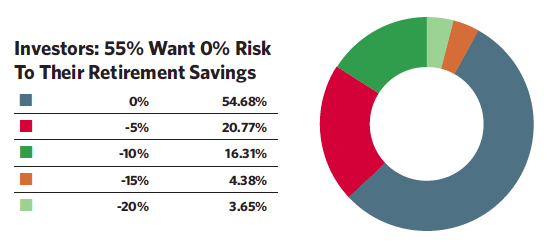This is the basis of our WealthVest/Pfau/Shiller dynamic withdrawal rule (named in part for Dr. Pfau, a professor of retirement income at the American College, and Robert Shiller, Nobel laureate and professor of economics at Yale University). The rule’s most dramatic finding is that there is no universal safe withdrawal rule for retirees.
Such a rule would depend on when a person retires. And today is a particularly unfortunate time to become a new retiree. The sustainable withdrawal rates that we forecast is 1.70% for a 60/40 stock-bond portfolio for 30 years and 1.26% for a 60/40 stock-bond portfolio for 40 years. But those results are time-dependent. Next year, a different Shiller PE 10 level and a different U.S.
10-year Treasury bond yield will result in different rates.
Our research uses the U.S. 10-year bond yield as of January 1, 2015, and the Shiller PE 10 recorded on the same day. Once we incorporate the appropriate management fees and average advisor fees, the 10-year trailing after-fee returns for stocks and bonds during these periods are not only far below historic averages, but the equity returns are negative. This has a doubly negative impact on today’s retirees—they are losing money on their investment portfolios and they are reducing the principal amounts for their retirement needs. That means their portfolios would be much reduced if and when the market recovers.

We have never seen a time like today, when a standard 60/40 stock-bond asset allocation could see returns below historic averages on both sides of the investment pie and when they even threaten negative total returns.
Bill Bengen deserves much of the credit for starting the debate on what constitutes a safe withdrawal rate from a retirement investment portfolio—and for coming up with the 4% figure. Since he was dealing with the broad marketplace, he did not include mutual fund management fees or investment advisor fees, which must be added by a financial advisor doing serious planning today. Furthermore, he was working from a more generalized set of market return forecasts.
Our model is focused on the very specific probabilities of safe withdrawal rates at today’s stock and bond market levels. And our analysis strongly suggests that excluding fees and not solving for the specific sequence-of-return risk—the effect of very poor returns or losses early in the life of the portfolio—places retirees at an unreasonably high risk of running out of money, especially given the shape of today’s asset prices. That is why, using the January 1, 2015, numbers, we find there’s a 50% chance that the retiree will run out of money before he or she dies if the 4% rule is employed.
Bengen is not alone in attempting to find a direct and simple way to inform advisors and retirees. Wade Pfau has written extensively on these issues. So have Gordon Pye, Michael Kitces, William Sharpe, Jason Scott, Laurence Kotlikoff and others, often focusing on a consumption-smoothing approach whereby the retiree adjusts spending as assets either appreciate or depreciate.
Dynamic Withdrawal Rule—Simplified
October 1, 2015
« Previous Article
| Next Article »
Login in order to post a comment
Comments
-
God loves us all and loves dynamic withdrawal rule too...
-
I am glad to see that so many thoughtful advisors have dismissed annuities as the solution for almost anyone facing or in retirement. it's marketing pure and simple. the concept is great but you give the money now plus fees and maybe you get the annuity (which is not inflation adjusted) and maybe the insurance company goes out of business at some point (usually the one that gave you the best rate). Advisors (most of them) are smarter than most people give them credit for.
-
pughman, it's not a tool, it's a sales product clear and simple. yep, annuities have been around since henry the 8th. Henry didn't have life expectancies and medical breakthroughs which we have today. Watch what happens if the boomers owning annuities live much longer than actuarially assumptions currently estimates. then the dirt is going to hit the fan. It'll be no different than what occurred with LTC insurance and social security. yep, socialize the losses, fat commissions to the capitalists!!!
-
annuities have been around for hundreds of years - henry the 8th - issued them - its about the risk of running out of income
-
low interest rates - market turbulence - flat returns n market over last 15 years how can annuitiesrajoke dismiss any tool that might help - especially getting mortality bonus - i.e the older you are the more you get - i don,t see munis yields proving income - without increase risk -annuities are neither good or bad - just a tool - and just because the balence is investedfor" long term appreciation" doesn't mean it will -sequence of return
-
As soon as I saw "annuities" in the article, I knew it was time to stop reading. This past week, I met with another "satisfied annuity" purchaser who would have been much better off buying a muni-ladder for a majority of what he committed to the product and with the remaining piece invested in the market for long-term appreciation. To say he was angry, is an understatement. Annuities will be the WMD for the boomer generation......








